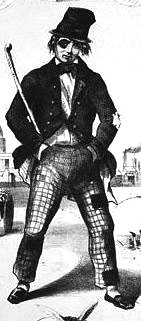Russell Theatre

Venue Type & Location
Site Name: Unlocated site
Location: Ottawa
County: Carleton
Location Type: Town - multiple sites at uncertain locations
Overview
Address:
It was not until the Russell Theatre opened on 15 October 1897 with the comic opera Kismet or the Two Tangled Turks, that Ottawa at last had a theatre of distinction. Adjoining the Russell Hotel at the corner of Queen and Elgin streets, the Russall had a seating capacity of 1,600, according to Cahn's Theatrical Guide of 1899-1900, although 1,500 may have been a more likely figure.
Patrons approached the Russell's arched main entrance from Queen Street. Moving through an environment of Italianate murals, tile mosaic floors, art glass, brass electroliers, and polished mahogany woodwork, they reached the entrance lobby where a gilded plaster bust of Queen Victoria looked down on all who gathered there. Two wide doors gave directly to an inner lobby from which stairs ascended each side to the balcony, family circle, and the gods. Two heavily draped portals opened to the orchestra seating, all upholstered in cardinal-red velour. A contemporary description of the auditorium tells us that 'the colour scheme on the walls is carmine, shading off to lighter tints. On the ceiling below the first balcony on entering the doors from the pit, one sees a beautiful figure design entitled "Psyche's Dream." On the sounding board are also three figures representing "Drama," "Music," and "Art." The remainder of the mural decoration consists of the chaste, simple and graceful borders of the style of the Italian Renaissance' (Ottawa Citizen, 16 October 1897). An early photograph of the audiorium fails to show Frederick Challeneer's great mural on the sounding board, 'The Triumph of Drama,' but it does show the house drop on whihc a lesser artist had laboured over a gigancitc scene of a CPR right of way in the Rocky Mountains.
There were five boxes on each side of the house arranged in two tiers of two boxes each with a larger box on a level above, from which one could not likely see much of the stage. All the boxes were semicircular in plan, since they protruded into the auditorium, and all were heavily embellished in ornamental plaster designed to give visual impact but happily providing good sound reflection properties as well, to the benefit of those seated further from the stage.
The Russell's proscenium opening measured thirty-two fee square, and according to the contemporary Cahn Theatrical Guide, the liberally trapped stage was a respectable forty feet from foots to back wall and sixty-five feet between the side walls. The height of the rigging loft above the stage was sixty-four feet with a distance between fly girders of forty-eight feet. On the day it first opened, this substantial and well-appointed theatre had enough stock scenery to make up fifty scenes.
As happened to so much of Ottawas earlier architecture, fire destroyed the Russell in 1901; it was promptly rebuilt, surviving until the spring of 1928, when it was pulled down because it stood in the way of progress on the nation's largest roundabout, Confederation Square (pp. 242-243).
Fairfield, Robert. "Theatres and Performance Halls." Early Stages: Theatre in Ontario 1800-1914. Editor Ann Saddlemyer. University of Toronto, 1990. pp. 214-287.
Performer/Company at Russell Theatre
| Performer/Company | Patron | Type | # of events |
|---|---|---|---|
| Ralph E Cummings and his troupe | (-) | Dramatic | 1 |
| The Orpheum Players | (-) | Dramatic | 1 |
| H. Campbell-Duncan English Players | (-) | Dramatic | 1 |
Events at Russell Theatre
| Event | Date | Venue Location | Troupe |
|---|---|---|---|
| Dramatic | 1914-1914 | Ottawa, Carleton | Ralph E Cummings and his troupe |
| Dramatic | 1921-1921 | Ottawa, Carleton | The Orpheum Players |
| Dramatic | 1923-1923 | Ottawa, Carleton | H. Campbell-Duncan English Players |
 On the Road Again
On the Road Again



